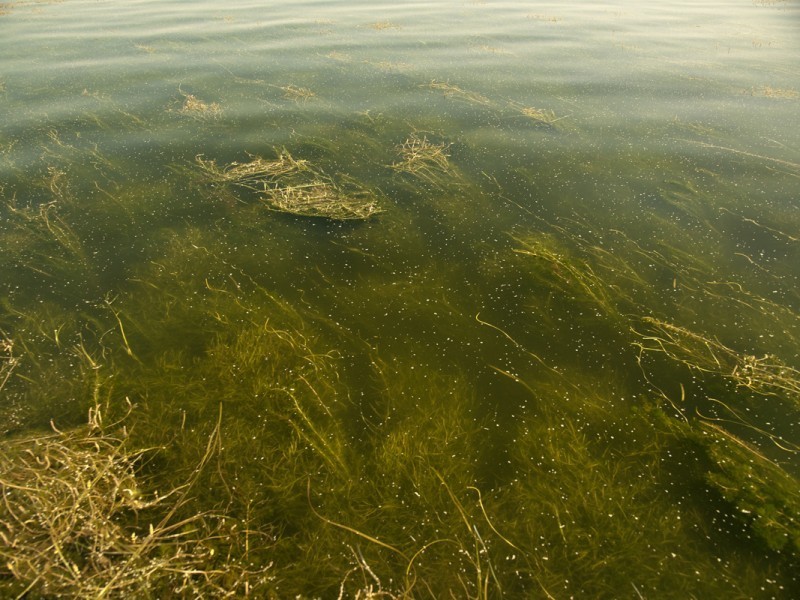By Timothy B. Wheeler
Bay Journal
The wintry weather may have been frightful, but the latest Bay Barometer is pointing in a generally positive direction.
The annual report released by the federal-state Chesapeake Bay Program trumpeted continued gains in the long-running effort to restore the estuary, with new highs reached last year in fish passage, water quality and blue crab and underwater grass abundance.
“We’re pretty much seeing progress across the board, which is a great thing,” said Jim Edward, acting director of the U.S. Environmental Protection Agency’s Bay Program office.
Edward highlighted gains seen in several of the 20 indicators the Bay Program tallies to track the health and restoration of the Chesapeake.
- Blue crabs: Last year’s winter dredge survey concluded that the number of adult female crabs in the Bay had jumped 31% to 254 million, the highest estimate since the survey began more than 20 years ago and well above the 215 million target scientists had set for rebuilding the crustacean’s population;
- Underwater grasses: Aerial surveys in 2016 — the most recent year for which data is available — found 97,000 acres of submerged aquatic vegetation growing in the Bay, more than the goal set for 2017 and more than halfway to the ultimate restoration goal of 185,000 acres.
- Fish passage: In the previous four years, 1,126 miles of river and stream have been opened to spawning fish, exceeding the program’s goal of creating 1,000 miles of new migratory habitat.
- Water quality: 39% of the Bay and its tidal tributaries met water quality standards from 2014 through 2016, the highest amount ever recorded.
The Bay Program figures that pollution-reducing measure put in place since 2009 have achieved 33% of the nitrogen curbs, 81% of the phosphorus cuts and 57% of the sediment reductions needed to achieve clean-water standards.
Still much work to be done
Edward cautioned against assuming the Bay’s restoration is assured, even with water quality gains like these.
“Despite these promising numbers,” he said, “we have a lot of work to achieve.” Farm, urban and suburban runoff continues to cause problems throughout the watershed, he added, and climate change will affect future progress.
Not all the indicators pointed upward, either, or pointed toward improved aquatic health.
There were just 64 miles of forest buffers planted along Bay rivers and streams in 2015, the lowest number in years and far below the 836-mile annual goal. The share of Bay waters impaired by toxic pollutants grew from nearly 74% in 2012 to more than 80% in 2014 – but that reflected more comprehensive surveys for contaminants, rather than worsening pollution, said Scott Phillips with the U.S. Geological Survey.
William Baker, president of the nonprofit Chesapeake Bay Foundation, said the report was evidence the restoration effort is working, though not complete. He called on Congress to fully fund EPA’s Bay Program, and on EPA Administrator Scott Pruitt to “cease his ongoing efforts to weaken federal clean air and water laws.
“Now, more than ever,” Baker added, “we need EPA as a federal partner that will champion clean water.”
Three new indicators
This year’s Bay Barometer included three new indicators intended to track public engagement with the restoration effort — measuring environmental literacy, student watershed experiences and citizen stewardship.
The citizen stewardship indicator stresses the collective power of individual actions to boost the restoration effort, said Kate Fritz, director of the nonprofit Alliance for the Chesapeake Bay.
The stewardship indicator is based on what’s described as the first comprehensive survey of people’s actions and attitudes toward the Bay cleanup. The survey, done last year, yielded a stewardship index of 24 out of 100, which officials said showed both the challenge of and the potential for increasing individuals’ involvement in the restoration effort. Just 23% of those surveyed, for instance, said they volunteered in community efforts to improve water quality or environmental health, while 19% said they engaged in civic activities on behalf of the environment.
“We need all hands on deck to continue to achieve our pollution reduction goals,” Fritz said.
While the citizen stewardship numbers might seem discouragingly low, Al Todd, former director of the Alliance, noted that some seemingly entrenched attitudes and behaviors have changed dramatically over time, such as smoking in public, dumping used motor oil down storm drains and not cleaning up after pets. Todd said similar gains can be made toward Bay cleanup participation.
“It’s about building an environmental ethic,” he said, “nurturing in the public an environmental conscience.”




Recent Comments